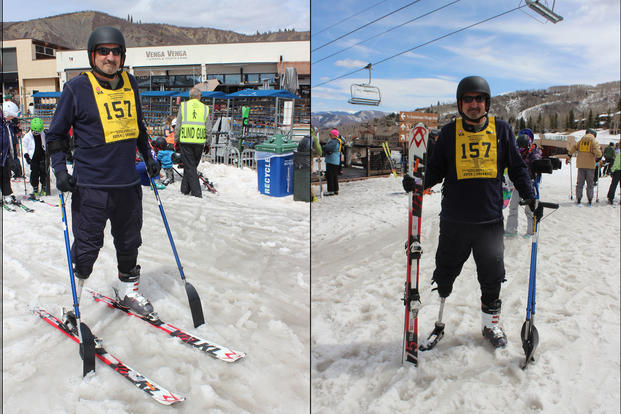It was a terrifying and uncertain moment: Vietnam infantry soldier Bill Caywood was hanging on a thin boundary between life and death, trying to contain his bleeding while coming in and out of consciousness on a MEDEVAC helicopter west of Chu Lai in 1969.
“We were walking patrol. Typically we would walk early in the morning. Infantry would walk in single file formation separated by some distance,” Bill says.
Bill had been walking point through terrain typically filled with North Vietnamese Army snipers, booby traps, mines and mortars – when the ground exploded beneath him, destroying his lower leg and sending shrapnel and shell fragments through much of his body.
Thrashed, stunned and fighting unspeakable pain, Bill tried to get to the helicopter while fellow soldiers struggled to stop his bleeding and keep him alive.
“At that point, I was conscious and tried to make my way to the helicopter. I did not know how much trouble I was in. I went into shock at that point and was in and out of consciousness,” he recalls. Medics sedated Bill to prevent an embolism from taking his life.
Flying on One Leg
Decades later, Bill inspires others as a war veteran who regularly flies down snowy, mountainous terrain, using a prosthetic lower leg attached to a ski. For more than 10 years, he has participated in the National Disabled Veterans Winter Sports Clinic, organized by Disabled American Veterans (DAV) and the Department of Veterans Affairs (VA).
The Winter Sports Clinic puts on a series of activities specifically for injured veterans every year, with events including downhill skiing, cross-country skiing and indoor scuba diving. The idea is to support veterans, build community and honor the tenacity and resilience of American war veterans – all of whom have made tremendous sacrifices.
“It's exciting to see all the young veterans out there and see how excited they are. The same situation that helped me is now helping them,” Caywood says.
Using a specially configured prosthetic ski, Bill just spent a week soaring down trails on Snowmass Mountain in Aspen, Colo.
“I take off my walking leg and put on a ski leg, which has a ski on it,” he says. “I never skied in my life until my 50s.”
Rejuvenation and Mentoring
Bill describes the experience as exhilarating and inspirational, a reason why he has attended the DAV clinic for many years. Joining hundreds of veterans participating in the activities, Bill says he is particularly moved by many of the younger Iraq and Afghanistan veterans who, much like he did, seek to again embrace life’s challenges and overcome combat injury.
“My story is fairly typical. It rejuvenates you and helps you realize there are things you never thought about doing that you can do now,” Bill explains.
Reflecting with candor about the challenges of reintegrating into normal life after a life-threatening combat injury, Bill says his post-war transition was extremely difficult.
“I had some difficulty in getting readjusted. At some point, you do not think about what you lost but about what you have left. That is when you have a turning point into a more positive situation,” he says.
Veterans participating in DAV programs are all coming back from the full range of combat injuries to include lost limbs, visual impairments and brain injuries, such as Traumatic Brain Injury.
“Everybody is mentoring everybody at the same time. This is a kind of bonding,” Bill says.















